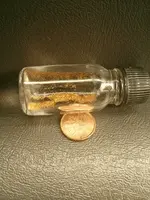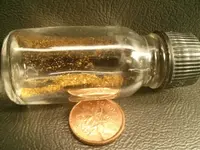Thanks. Now back to the drawing board errr I mean rock sorting.
I'm just dumping some thoughts in here from our fluid bed testing last year.
I'm tired........ so excuse me if it doesn't make total sense.
......................................................................
I think the first step is to understand the CAUSES... then come up with your cure.
A big part of the issue with black beach sands is "hydraulic equivalence".
Understand THAT... and you'll better understand your causes.
In a nutshell............
Fine black sands and the gold are similar in size.
However, much of the black sands are spheres and much of the gold is flat.
(I'll try and find some pics from under the microscope.)
So, even though the gold has a higher specific density, they are still "hydraulically equivalent".
This often causes both losses and impaction on any type of water based separation method.
Adding the pebbles in the right size based on the pressure of the bed can help.
The volume they take up often helps keep the bed fluidized somewhat and keeps it moving.
Still... losses are always higher when running this type of material.
You can also email Mike at the gold cube.
His black sands testing on the cube and other devices was very good.
20 - 30 % losses are not unusual when doing very controlled and measured testings.
Doc







